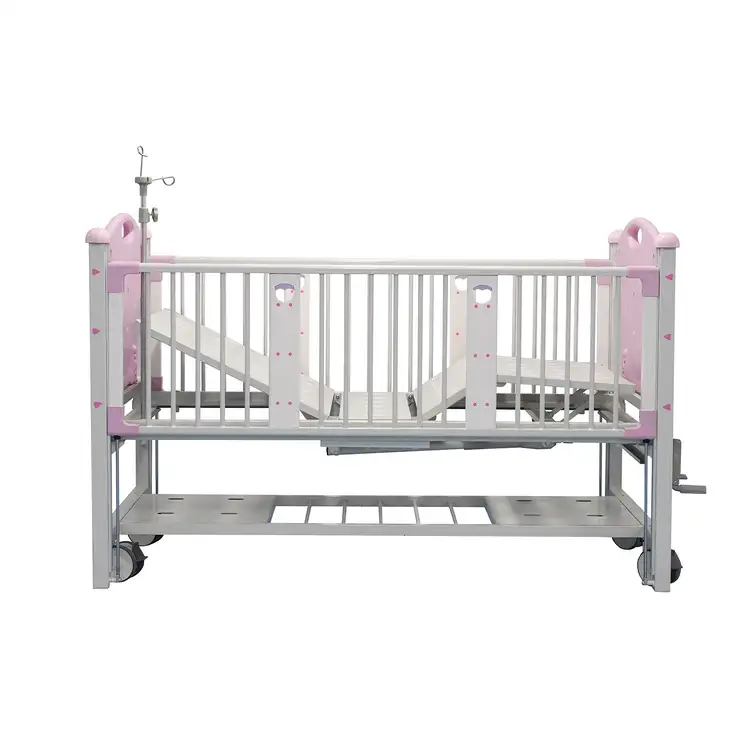Die Anschrift
304 Nordkardinal St.
Dorchester Center, MA 02124
Arbeitsstunden
Montag bis Freitag: 7:00 - 19:00
Wochenende: 10:00 - 17:00
Willkommen auf meinem Blog!
Bevor wir uns in die Inhalte vertiefen, würde ich mich freuen, wenn Sie mir auf meinen Social-Media-Plattformen folgen, wo ich weitere Einblicke gebe, mit der Community interagiere und Updates poste. So können Sie mit mir in Kontakt treten:
Facebook:https://www.facebook.com/profile.php?id=100071234835011
LinkedIn:https://www.linkedin.com/company/74943205/admin/dashboard/
YouTube:https://www.youtube.com/@shandongexpertmedicalequip4695
TikTok:https://www.tiktok.com/@expertmedical
Lassen Sie uns nun gemeinsam unsere Reise beginnen. Ich hoffe, Sie finden die Inhalte hier aufschlussreich, spannend und wertvoll.
Kinderkrankenhausbetten sind speziell für die besonderen Bedürfnisse von Kindern konzipiert. Sie bieten zahlreiche Vorteile, die Komfort, Sicherheit und Pflegequalität für junge Patienten verbessern. Das Verständnis dieser Vorteile hilft Eltern und medizinischem Fachpersonal, fundierte Entscheidungen in der Kinderversorgung zu treffen. Dieser Artikel befasst sich mit den verschiedenen Vorteilen von Kinderkrankenhausbetten, den wichtigsten Merkmalen und deren positivem Einfluss auf den Heilungsprozess.

Ein Kinderkrankenhausbett ist ein medizinisches Bett, das speziell für Säuglinge, Kleinkinder und ältere Kinder entwickelt wurde. Diese Betten sind so konstruiert, dass sie den unterschiedlichen Bedürfnissen junger Patienten gerecht werden und sowohl Komfort als auch Sicherheit gewährleisten. Sie verfügen typischerweise über Funktionen wie Höhenverstellung, Seitengitter und verschiedene Stützsysteme, die dem Pflegepersonal die Betreuung des Kindes erleichtern.
Krankenhausbetten für Kinder verfügen über mehrere wichtige Funktionen, darunter:
| Besonderheit | Beschreibung |
|---|---|
| Verstellbare Höhe | Ermöglicht einfachen Zugriff und einfache Verwaltung durch Pflegekräfte |
| Seitenschienen | Verhindert Stürze und erhöht die Sicherheit |
| Gewichtskapazität | Entwickelt, um die unterschiedlichen Gewichte von Kindern zu unterstützen |
| Spezialmatratzen | Bietet Komfort und Unterstützung für unterschiedliche Bedürfnisse |
Einer der Hauptvorteile eines Kinderkrankenhausbetts ist der Komfort, den es bietet. Im Gegensatz zu Standardbetten sind diese Spezialbetten auf die Anatomie des Kindes zugeschnitten. Sie verfügen oft über Funktionen, die eine bessere Positionierung ermöglichen und so Beschwerden während der Genesung lindern können. Ein gut gestaltetes Bett kann das Gesamterlebnis eines Kindes im Krankenhaus deutlich verbessern.

Sicherheit hat in der Kinderpflege oberste Priorität. Kinderkrankenhausbetten verfügen oft über hochklappbare Seitengitter, um Stürze zu verhindern. Dies ist besonders wichtig für junge Patienten, die aufgrund von Medikamenten oder Krankheiten unruhig oder verwirrt sind. Die verstellbare Höhe erleichtert es Pflegekräften zudem, das Kind ohne Anstrengung zu erreichen, wodurch das Verletzungsrisiko minimiert wird.
Kinderkrankenhausbetten sind für verschiedene medizinische Verfahren konzipiert. Die verstellbare Höhe ermöglicht es dem medizinischen Personal, Untersuchungen und Behandlungen bequem durchzuführen. Darüber hinaus ermöglicht die Konstruktion dieser Betten oft einen schnellen Zugriff auf medizinische Geräte und gewährleistet so eine schnelle und effiziente Versorgung.
Ein Krankenhausaufenthalt mit einem Kind kann für Familien eine belastende Erfahrung sein. Kinderkrankenhausbetten sind oft so konzipiert, dass die Familie in die Pflege einbezogen werden kann. Dank der verstellbaren Betten können Eltern ihrem Kind nahe sein und es in schwierigen Zeiten trösten und beruhigen. Manche Betten bieten sogar die Möglichkeit, neben dem Kind zu schlafen oder zu ruhen.
Komfort und Sicherheit tragen direkt zum Genesungsprozess eines Kindes bei. Studien zeigen, dass Kinder, die sich sicher und wohl fühlen, sich schneller erholen. Das Design von Kinderkrankenhausbetten mit seinen stützenden Eigenschaften kann Ruhe und Schlaf fördern, die beide für die Heilung entscheidend sind.
Zusammenfassend lässt sich sagen, dass Kinderkrankenhausbetten eine wichtige Rolle in der pädiatrischen Versorgung spielen. Ihre einzigartigen Eigenschaften erhöhen den Komfort, verbessern die Sicherheit und erleichtern medizinische Eingriffe. Gleichzeitig fördern sie die Einbindung der Familie in den Pflegeprozess. Durch die Wahl eines geeigneten Kinderkrankenhausbetts können Pflegekräfte das Gesamterlebnis junger Patienten deutlich verbessern und so zu ihrer Genesung und ihrem Wohlbefinden beitragen.
Die Gewichtskapazität von Kinderkrankenhausbetten liegt je nach Modell und Ausführung typischerweise zwischen 150 und 300 Pfund.
Berücksichtigen Sie bei der Auswahl eines Kinderkrankenhausbetts Faktoren wie Alter und Gewicht des Kindes, erforderliche Funktionen (wie Höhenverstellung und Seitengitter) und etwaige besondere medizinische Bedürfnisse.
Kinderkrankenhausbetten sind in erster Linie für Säuglinge und Kinder bis zu einem bestimmten Gewicht konzipiert, normalerweise im Jugendalter. Ältere Kinder benötigen möglicherweise andere Vorkehrungen.
Krankenhausbetten für Kinder müssen den von Aufsichtsbehörden festgelegten Sicherheitsstandards entsprechen, um sicherzustellen, dass sie für den Einsatz in medizinischen Einrichtungen sicher sind.
Ja, bei der Konstruktion vieler Krankenhausbetten für Kinder wurde auf Platz und Zugänglichkeit geachtet, sodass medizinische Geräte wie Monitore und Infusionsständer problemlos platziert werden können.
Eltern können für mehr Komfort sorgen, indem sie die Höhe des Bettes anpassen, geeignete Bettwäsche verwenden und das Kind ermutigen, seinen Raum mit vertrauten Gegenständen wie Decken oder Spielzeug zu personalisieren.
Die Kosten für ein Kinderkrankenhausbett können stark variieren und liegen je nach Ausstattung und Spezifikationen normalerweise zwischen $1.000 und $5.000 oder mehr.
Ja, viele Sanitätshäuser bieten Mietoptionen für Kinderkrankenhausbetten an, was bei kurzfristigem Bedarf eine kostengünstige Lösung sein kann.
Kinderkrankenhausbetten sollten regelmäßig auf Abnutzungserscheinungen überprüft werden. Um ihre Sicherheit und Funktionsfähigkeit zu gewährleisten, werden alle paar Monate Wartungskontrollen empfohlen.
Ja, viele Familien entscheiden sich dafür, Kinderkrankenhausbetten zu Hause für die weitere Pflege zu nutzen, insbesondere für Kinder mit chronischen Erkrankungen oder solche, die sich von einer Operation erholen.
